
Deutsch-Chinesische Enzyklopädie, 德汉百科

| Letter | IPv4 address | IPv6 address | AS-number[8] | Old name | Operator | Location & Nr. of sites (global/local)[9] | Software |
|---|---|---|---|---|---|---|---|
| A | 198.41.0.4 | 2001:503:ba3e::2:30 | AS19836,[8][note 1] AS36619, AS36620, AS36622, AS36625, AS36631, AS64820[note 2][10] | ns.internic.net | Verisign | Distributed using anycast 5/0 | NSD and Verisign ATLAS |
| B | 199.9.14.201[note 3][11] [12] | 2001:500:200::b[13] | AS394353[14] | ns1.isi.edu | USC-ISI | Distributed using anycast 2/0 | BIND |
| C | 192.33.4.12 | 2001:500:2::c | AS2149[8][15] | c.psi.net | Cogent Communications | Distributed using anycast 8/0 | BIND |
| D | 199.7.91.13[note 4][16] | 2001:500:2d::d | AS27[8][17] | terp.umd.edu | University of Maryland | Distributed using anycast 50/67 | NSD[18] |
| E | 192.203.230.10 | 2001:500:a8::e | AS21556[8][19] | ns.nasa.gov | NASA Ames Research Center | Distributed using anycast 95/97 | BIND and NSD |
| F | 192.5.5.241 | 2001:500:2f::f | AS3557,[8][20] AS1280, AS30132[20] | ns.isc.org | Internet Systems Consortium | Distributed using anycast 57/0 | BIND [21] |
| G[note 5] | 192.112.36.4[note 6] | 2001:500:12::d0d[note 6] | AS5927[8][22] | ns.nic.ddn.mil | Defense Information Systems Agency | Distributed using anycast 6/0 | BIND |
| H | 198.97.190.53[note 7][23] | 2001:500:1::53[note 8][23] | AS1508[23][note 9][24] | aos.arl.army.mil | U.S. Army Research Lab | Aberdeen Proving Ground, Maryland & San Diego, California 2/0 | NSD |
| I | 192.36.148.17 | 2001:7fe::53 | AS29216[8][25] | nic.nordu.net | Netnod | Distributed using anycast 58/0 | BIND |
| J | 192.58.128.30[note 10] | 2001:503:c27::2:30 | AS26415,[8][26] AS36626, AS36628, AS36632[26] | N/A | Verisign | Distributed using anycast 61/13 | NSD and Verisign ATLAS |
| K | 193.0.14.129 | 2001:7fd::1 | AS25152[8][27][28] | N/A | RIPE NCC | Distributed using anycast 5/23 | BIND, NSD and Knot DNS[29] |
| L | 199.7.83.42[note 11][30] | 2001:500:9f::42[note 12][31] | AS20144[8][32][33] | N/A | ICANN | Distributed using anycast 161/0 | NSD and Knot DNS[34] |
| M | 202.12.27.33 | 2001:dc3::35 | AS7500[8][35][36] | N/A | WIDE Project | Distributed using anycast 6/1 | BIND |
 Belarus
Belarus

 Education and Research
Education and Research

 Hand in Hand
Hand in Hand

 Hand in Hand
Hand in Hand
 Institute of Culture and Language
Institute of Culture and Language

 Hand in Hand
Hand in Hand
 Institute of Culture and Language
Institute of Culture and Language
 Kasachstan
Kasachstan
 Kyrgyzstan
Kyrgyzstan

 Art
Art

 Literature
Literature
 Russia
Russia
 Tajikistan
Tajikistan

 United Nations
United Nations
 Official languages
Official languages
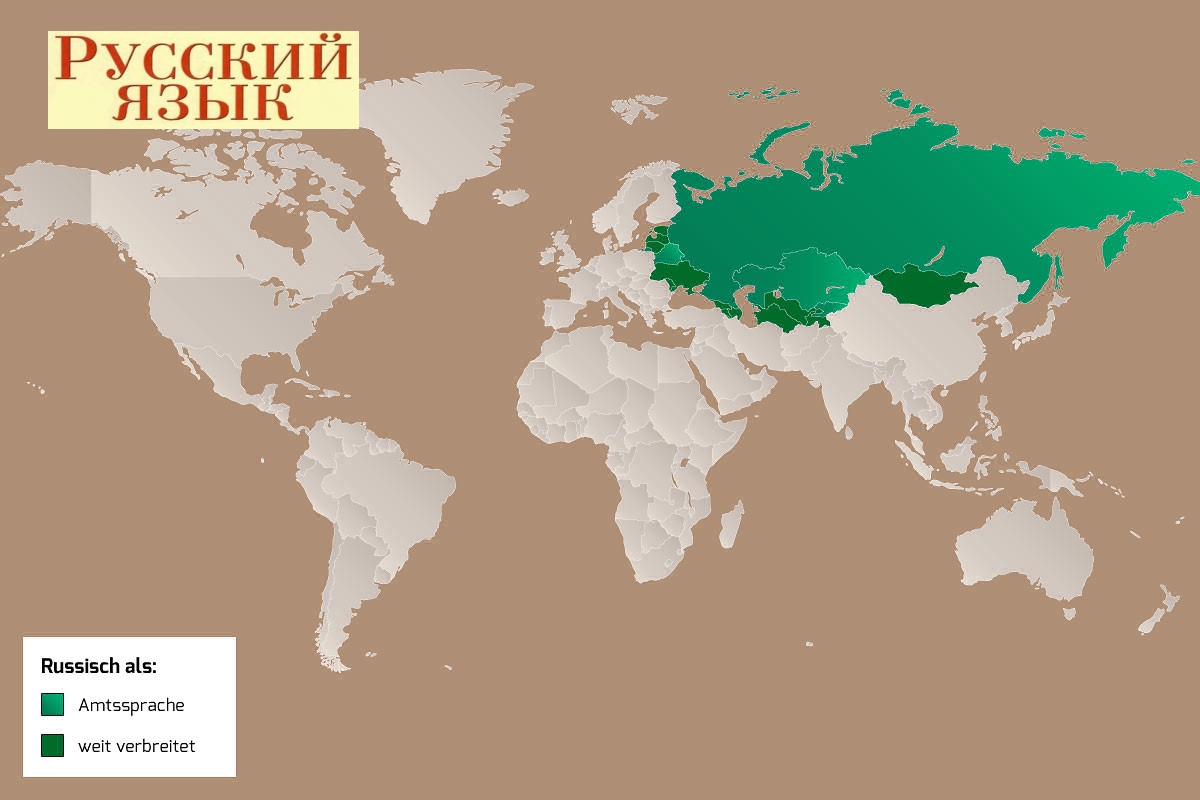
俄罗斯语(русский язык,罗马化:russkiy yazyk,发音:[ˈruskʲɪj jɪˈzɨk] (ⓘ)),通称俄语,属于斯拉夫语族的东斯拉夫语支,是斯拉夫语族中使用人数最多的语言,是俄罗斯、白俄罗斯、吉尔吉斯斯坦及哈萨克斯坦的官方语言,主要在俄罗斯等前苏联加盟共和国中使用,且在中国和华沙公约组织的成员国里曾经被学校广泛列为第一外语教学。俄文为联合国正式语文之一。在苏联时代,苏联加盟共和国和自治共和国非常强调俄语的重要性。虽然这些苏联的加盟共和国现在很多开始强调使用当地语言的重要性,在部分国家俄语已不再是官方语言,但俄语仍然是这些地区最广泛使用的共通语言。俄语属于印欧语系,是东斯拉夫语支中目前仍在使用的语言之一。目前发现最早的古东斯拉夫语文字是在十世纪的内容。俄语是欧亚大陆中分布区域广大的语言,也是斯拉夫语中最多人使用的语言。俄语也是欧洲最多人使用的母语,是俄罗斯、白俄罗斯、乌克兰1.44亿人的母语。
Die russische Sprache (Russisch, früher auch Großrussisch genannt; im Russischen: русский язык, [ˈru.skʲɪj jɪˈzɨk], deutsche Transkription: russki jasyk, wissenschaftliche Transliteration gemäß ISO 9:1968 russkij jazyk,[2] Ausspracheⓘ/?) ist eine Sprache aus dem slawischen Zweig der indogermanischen Sprachfamilie. Mit insgesamt etwa 250 Millionen Sprechern, davon ca. 150 Millionen Muttersprachlern, ist sie eine der meistverbreiteten Sprachen Europas. Sie gilt als eine der Weltsprachen. Sie spielt die Rolle der Lingua franca im postsowjetischen Raum und hat in mehreren seiner Staaten den Status einer Amtssprache.
Die eng mit dem Belarussischen, Ukrainischen und Russinischen verwandte Sprache wird mit dem kyrillischen Alphabet geschrieben, wobei es bestimmte russische Erscheinungsformen gibt. Die russische Standardsprache beruht auf den mittelrussischen Mundarten der Gegend um Moskau. Sie ist die Originalsprache zahlreicher bedeutender Werke der Weltliteratur. Die Wissenschaft, die sich mit der russischen Sprache und der umfangreichen russischen Literatur beschäftigt, heißt Russistik.

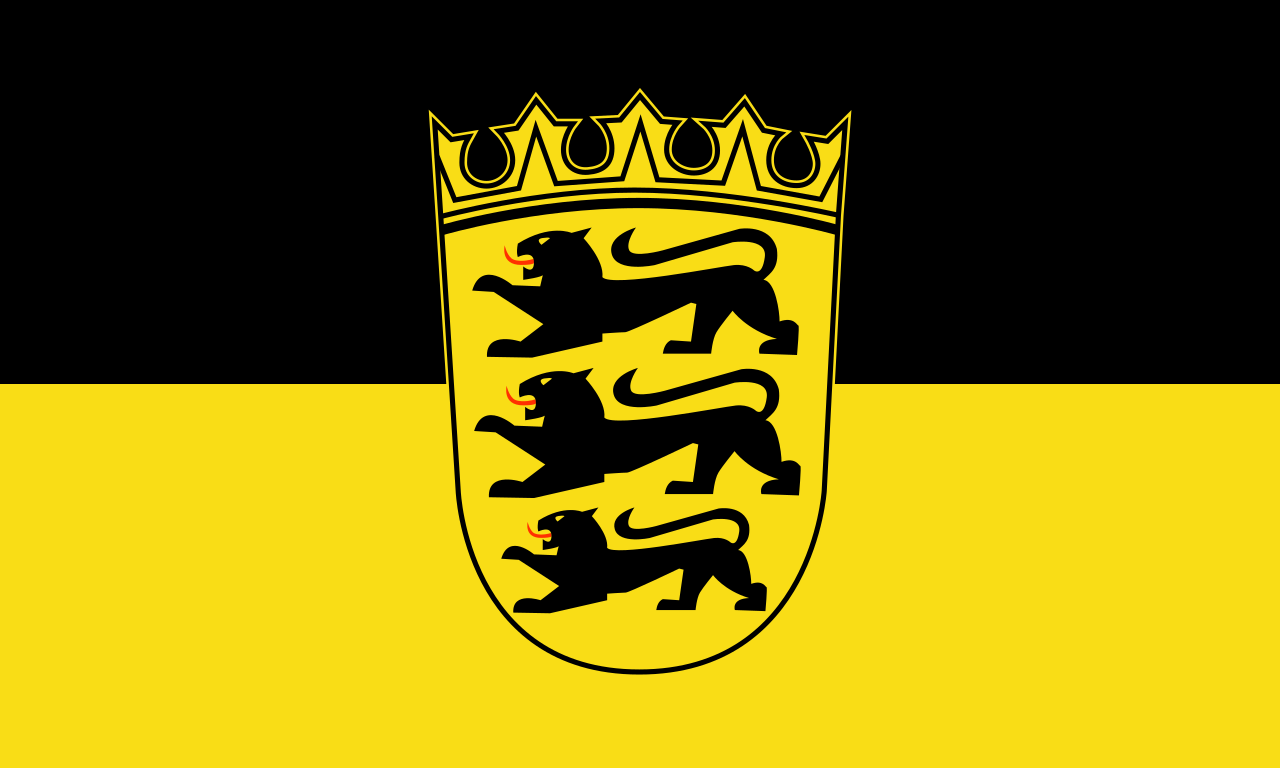 Baden-Wuerttemberg
Baden-Wuerttemberg

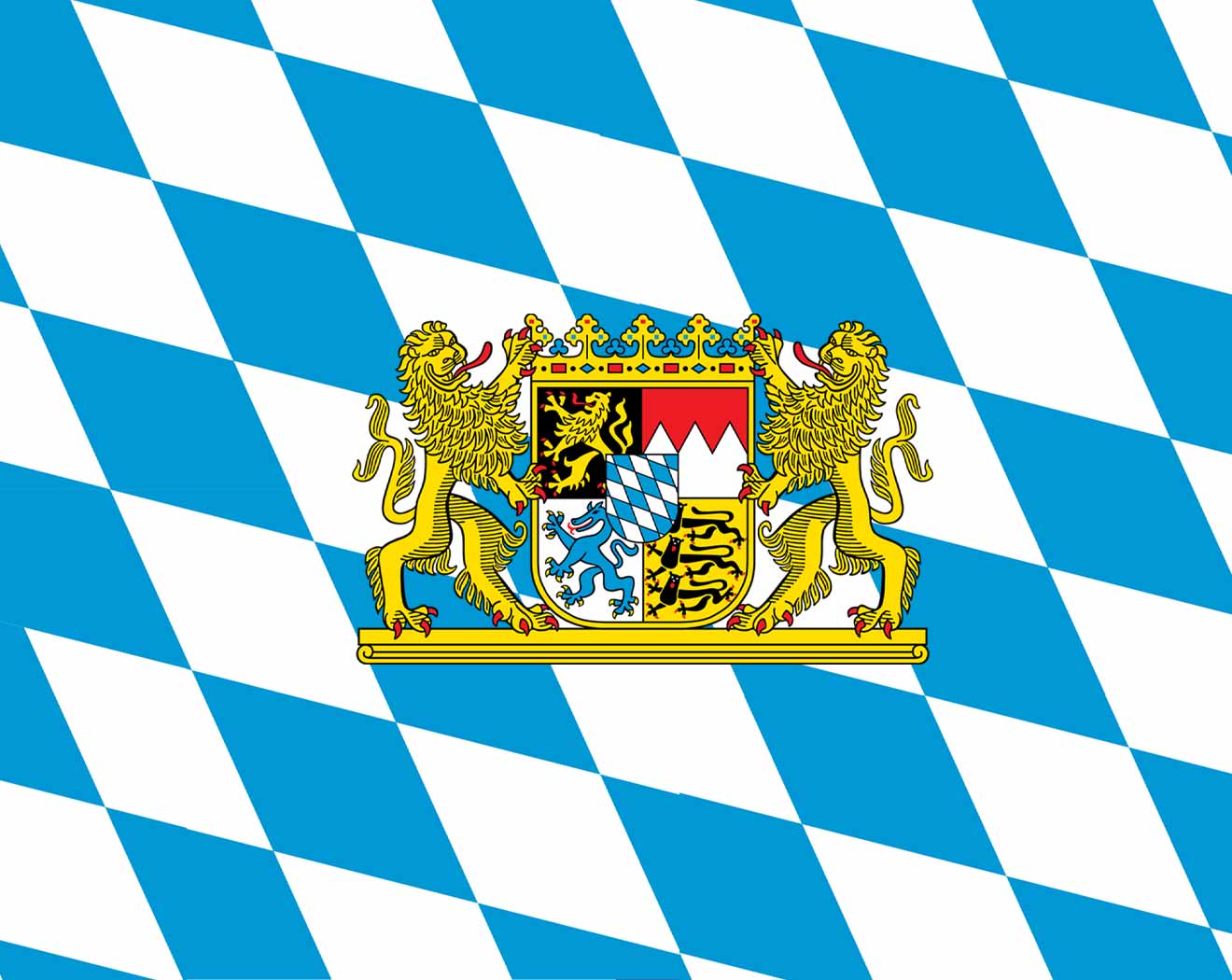 Bavaria
Bavaria
 Germany
Germany

 Energy resource
Energy resource
 Salt mines and salt pans
Salt mines and salt pans

 Eat and Drink
Eat and Drink
 *Salt road
*Salt road

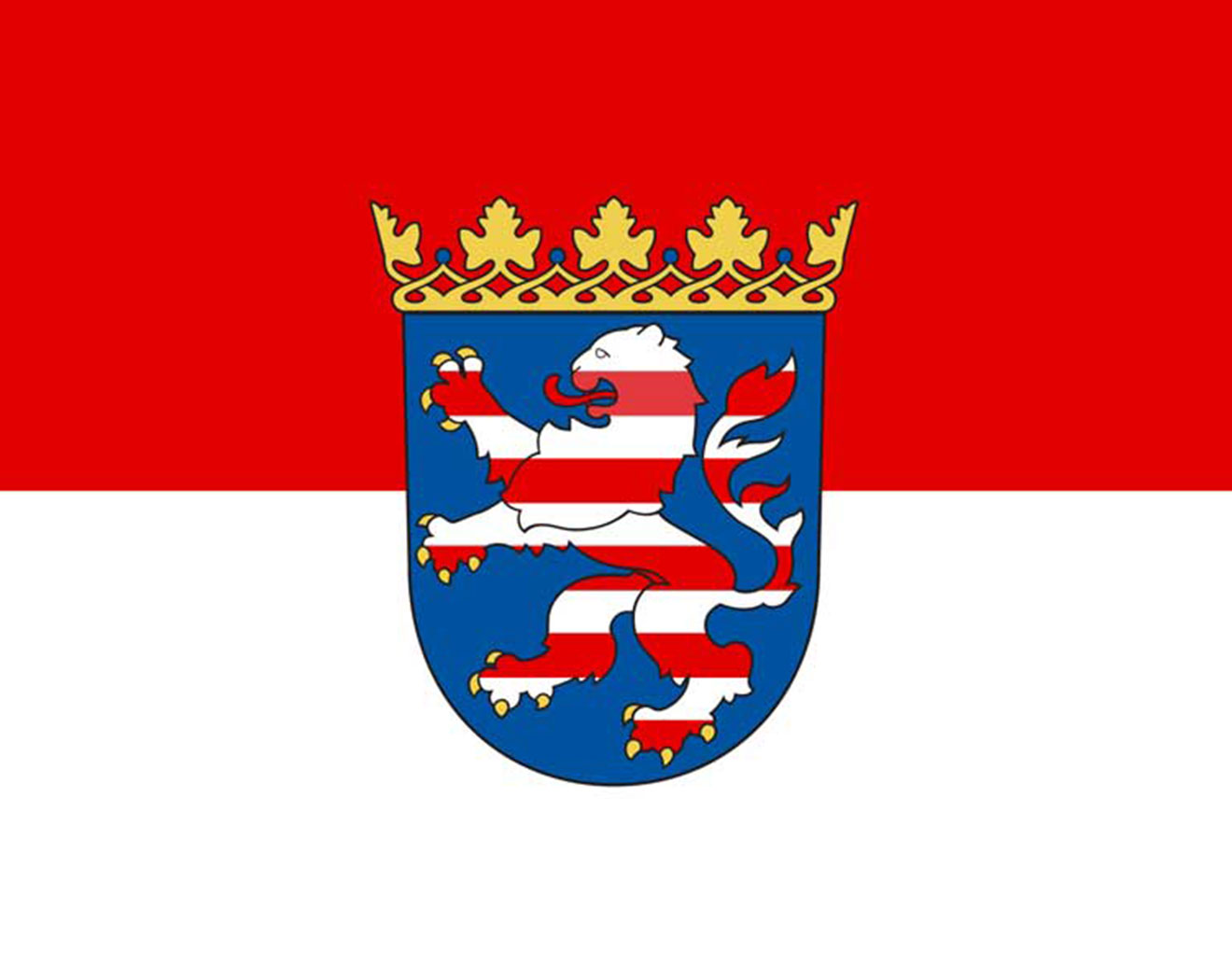 Hessen
Hessen

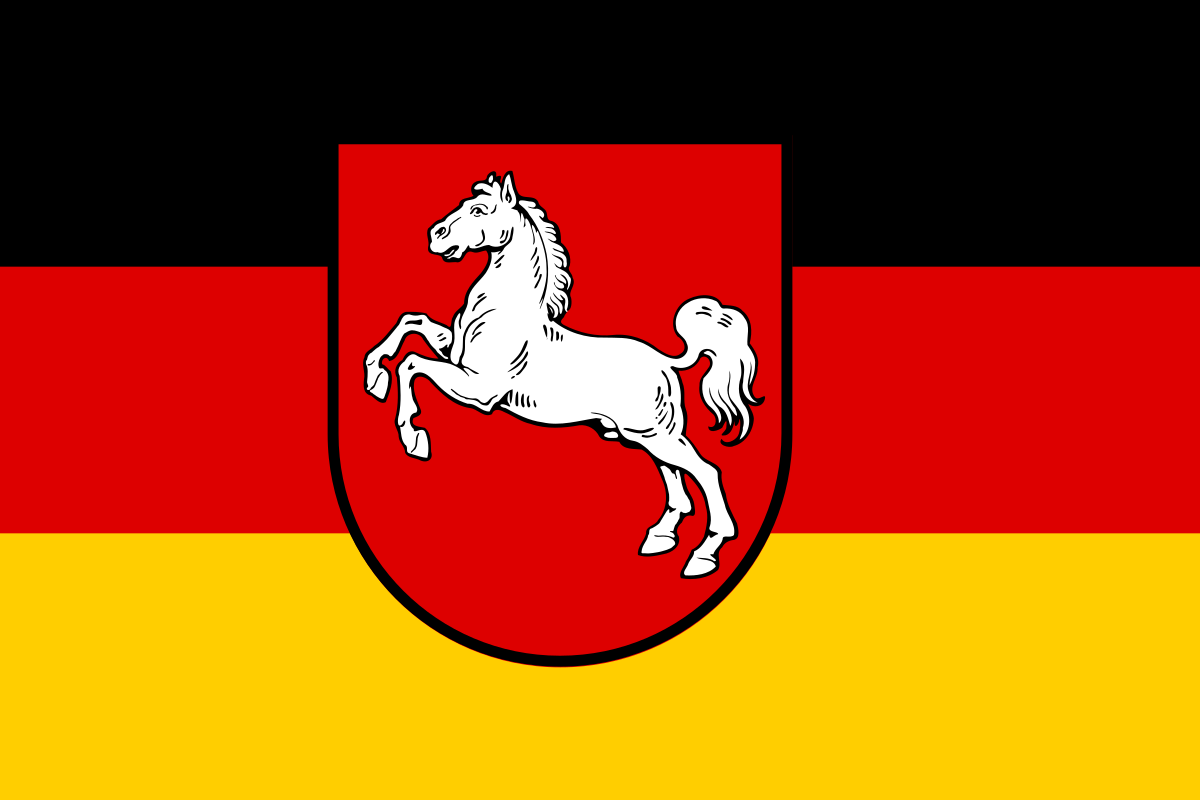 Lower Saxony
Lower Saxony

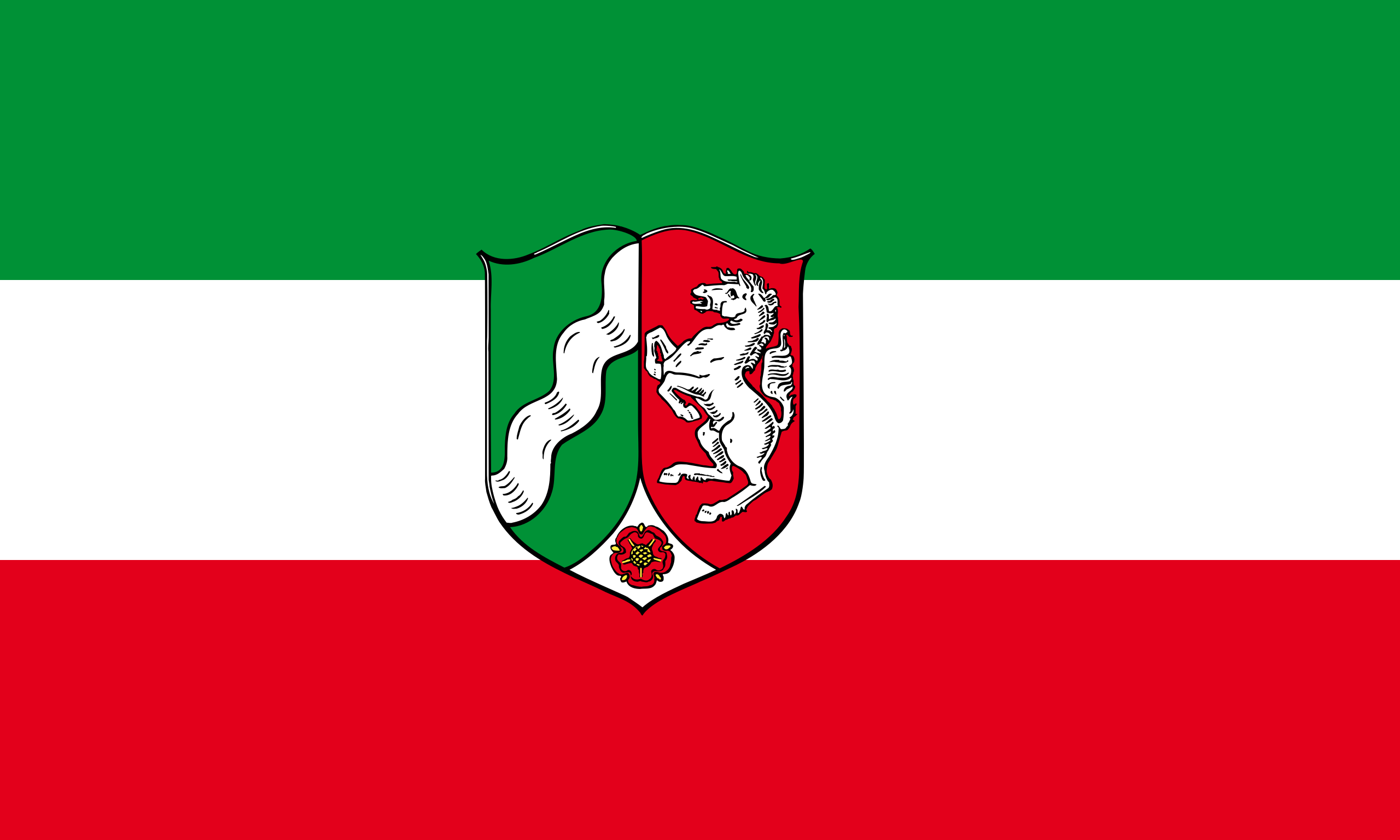 North Rhine-Westphalia
North Rhine-Westphalia

 Saxony-Anhalt
Saxony-Anhalt

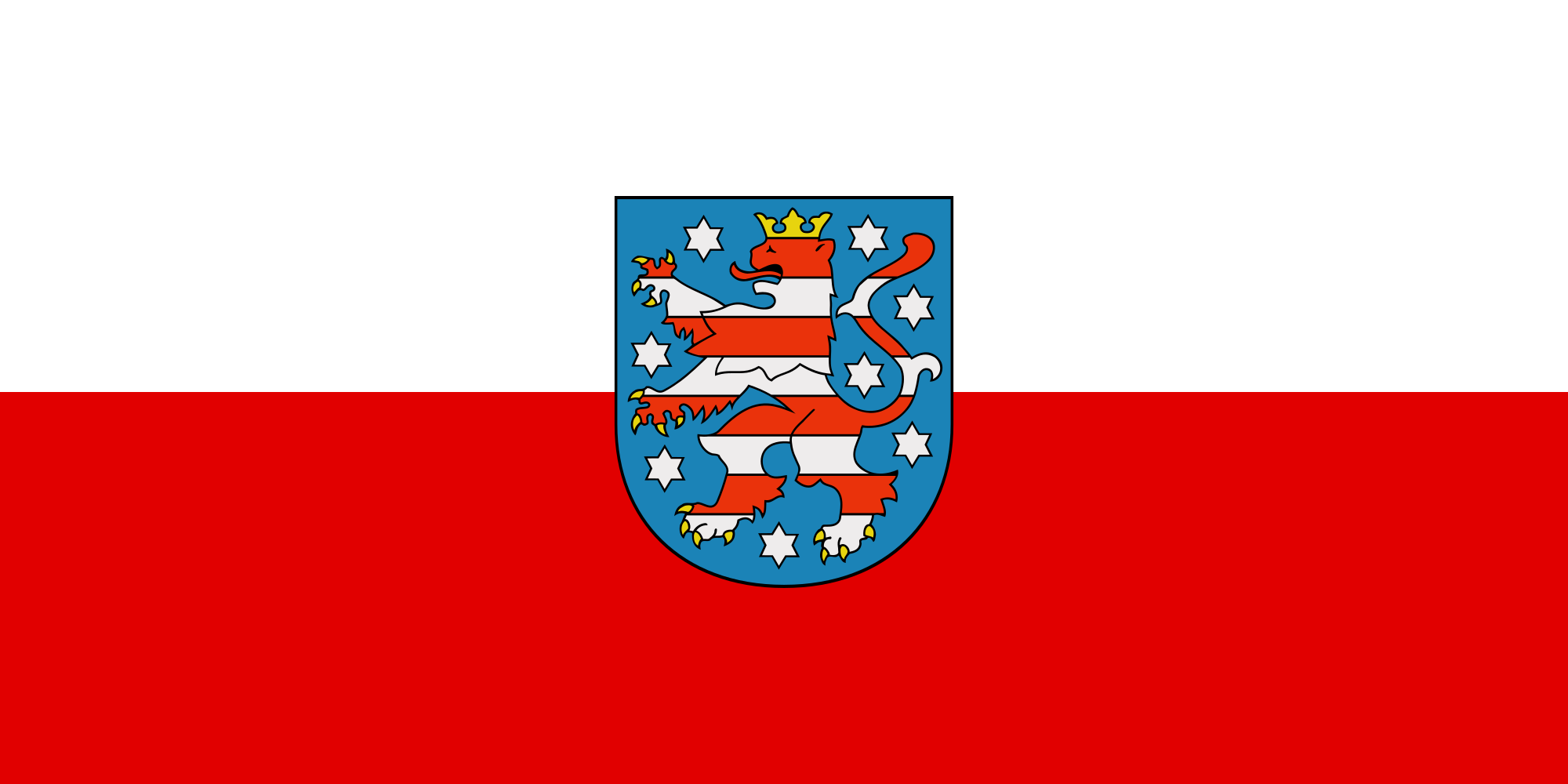 Thuringia
Thuringia


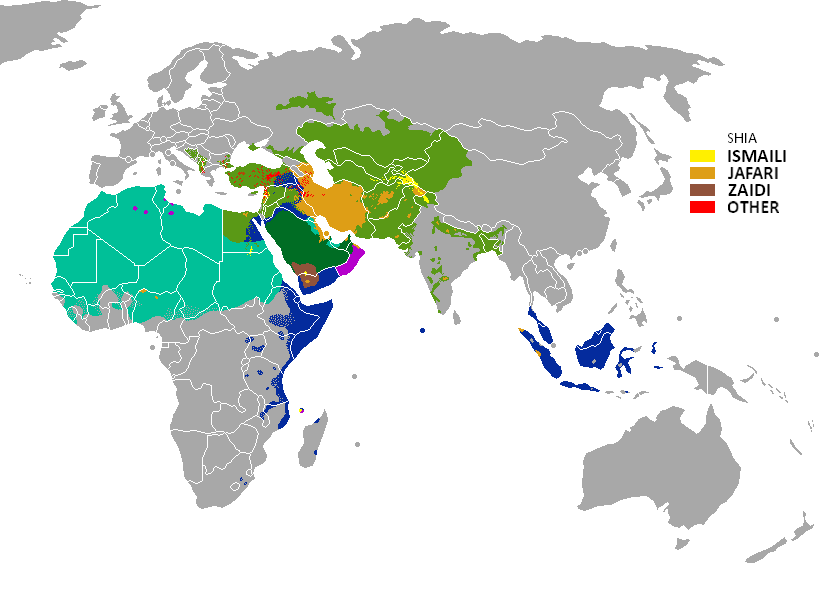
什叶派(阿拉伯语:شيعة,Shīʿah,英语:Shia,/ˈʃiːə/),来自阿拉伯语:شيعة علي(Shīʻatu ʻAlī,Shia-ne-Ali)的缩写,原意为阿里的追随者,与逊尼派并列为伊斯兰教的两大主要教派之一。什叶派与逊尼派各门派中的主要不同不在于教义问题,主要在于谁是穆罕默德“真正接班人”。在历史上曾出现过“穆阿维耶什叶”、“奥斯曼什叶”和“阿里什叶”等,目前则专指认为穆罕默德的继任者是阿里·本·阿比·塔利卜(穆罕默德堂弟及女婿)的人,逊尼派则认为穆罕默德的继任者是他的岳父阿布·伯克尔。
Die Schia (arabisch الشيعة asch-schīʿa, DMG aš-šīʿa ‚Anhängerschaft, Partei, Gruppe‘), im Deutschen auch Schiitentum oder Schiismus genannt, ist nach dem Sunnitentum die zweitgrößte religiöse Strömung innerhalb des Islams. Heute wird der Begriff häufig in verallgemeinernder Weise für die Zwölferschia verwendet, die die zahlenmäßig größte Gruppe innerhalb der Schia darstellt, allerdings umfasst die Schia noch zahlreiche andere Gruppierungen.
シーア派(アラビア語:الشيعة、ラテン文字転写:ash-Shīʻa(h))は、イスラム教の二大宗派の一つで、2番目の勢力を持つ。最大勢力であるもう一方はスンナ派(スンニ派)である。
7世紀のカリフであったアリー[1]とその子孫のみが、預言者の代理たる資格を持ち、「イスラム共同体(ウンマ))」の「指導者(イマーム)」の職務を後継する権利を持つと主張する。
Shia Islam or Shi'ism is one of the two main branches of Islam. It holds that the Islamic prophet Muhammad designated Ali ibn Abi Talib as his successor and the Imam (leader) after him,[1] most notably at the event of Ghadir Khumm, but was prevented from the caliphate as a result of the incident of Saqifah. This view primarily contrasts with that of Sunni Islam, whose adherents believe that Muhammad did not appoint a successor and consider Abu Bakr, who was appointed caliph by a group of Muslims at Saqifah, to be the first rightful caliph after Muhammad.[2] A person observing Shia Islam is called a Shi'ite.
Shia Islam is based on Muhammad's hadith (Ghadir Khumm).[3][4] Shia consider Ali to have been divinely appointed as the successor to Muhammad, and as the first Imam. The Shia also extend this Imammah to Muhammad's family, the Ahl al-Bayt ("the people/family of the House"),[5] and some individuals among his descendants, known as Imams, who they believe possess special spiritual and political authority over the community, infallibility and other divinely ordained traits.[6] Although there are many Shia subsects, modern Shia Islam has been divided into two main groupings: Twelvers and Ismailis, with Twelver Shia being the largest and most influential group among Shia.[7][8][9]
Il regroupe environ 10 à 15 % des musulmans. La première communauté chiite vit en Iran, où elle constitue 90 % de la population du pays, et environ 40 % de la population chiite mondiale2,3,4. Le reste des musulmans chiites se répartit principalement en Irak, en Azerbaïdjan, au Pakistan, en Inde, à Bahreïn et au Liban.
L’Islam sciita (in arabo: شيعة, shiʿa «partito, fazione», sottinteso «di ʿAli e dei suoi discendenti») è il principale ramo minoritario dell'Islam (intorno al 15% ai primi del XXI secolo).
Se da un lato essa presenta la maggioranza della popolazione in Iran, Iraq, Azerbaigian e Bahrein, dall'altro in Libano e in Yemen essa costituisce una forte e significativa minoranza, con quasi un terzo della popolazione di fede sciita.
In Egitto invece, in Siria, in Turchia, in Afghanistan, in India, in Qatar, in Kuwait, in Pakistan, nell'Asia Centrale ex-sovietica, nell'Africa islamica a sud del Sahara, lo sciismo vanta percentuali assai minori (tra il 5% e il 10%), come è il caso della stessa Arabia Saudita, col suo scarso 4-5% all'incirca. Anche all'interno dello sciismo (come nel sunnismo e nel kharigismo) ci sono i sufi e coloro che rifiutano l'approccio sufico considerato troppo libero.
El chiismo o islam chií (o chía, en árabe, شيعة (šīʿa)) constituye una de las principales ramas del islam junto al sunismo. Es el nombre tradicional por el que se conoce a la escuela de jurisprudencia islámica Ya'farita. El chiismo es profesado por alrededor del 15 % de los 1600 millones de musulmanes existentes en el mundo.2
Шии́ты (араб. شيعة; [шӣ‘а] — приверженцы, последователи) — направление ислама, объединяющее различные общины, признавшие Али ибн Абу Талиба и его потомков единственно законными наследниками и духовными преемниками пророка Мухаммеда[1]. В узком смысле понятие, как правило, означает шиитов-двунадесятников, преобладающее направление в шиизме, которое преимущественно распространено в Иране, Азербайджане, Бахрейне, Ираке и Ливане, а также в Йемене, Афганистане, Турции, Сирии, Кувейте, Пакистане, ОАЭ.
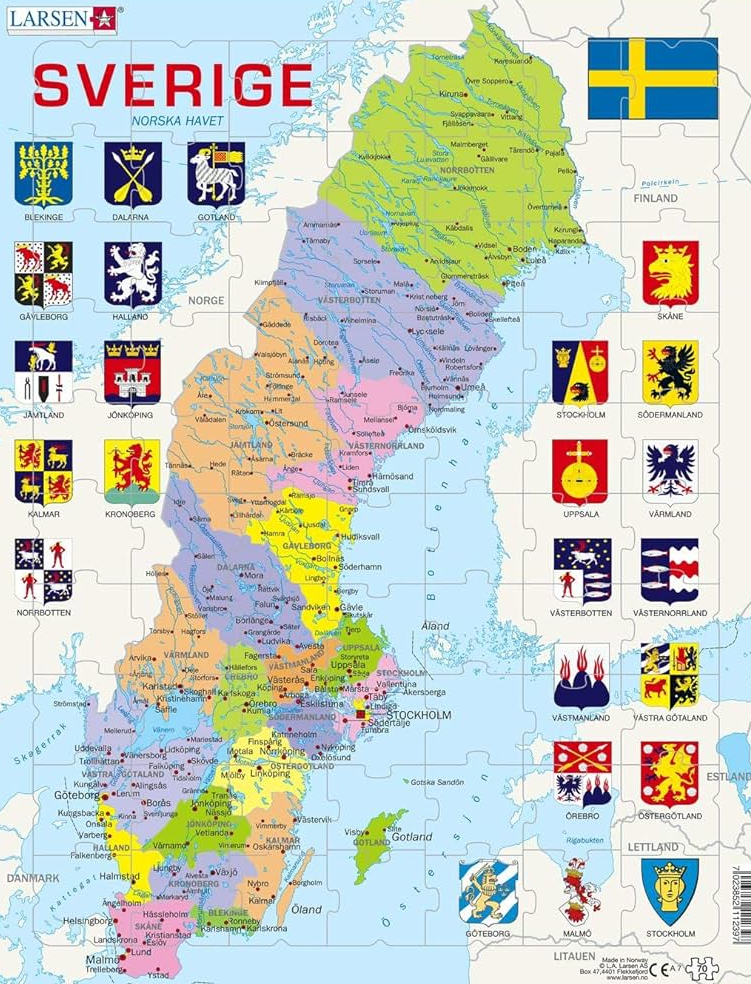
瑞典语(![]() svenska 帮助·信息 [ˈsvɛ̂nːska]),中文也称瑞典文,是北日耳曼语(也称为斯堪的那维亚语)的一种,主要使用地区为瑞典、芬兰(尤其是奥兰群岛),使用人数超过九百万人。它和斯堪的那维亚地区另外两种语言——丹麦语和挪威语——是相通语言。和其它北日耳曼语一样,瑞典语来源于古诺尔斯语。古诺尔斯语是维京时期斯堪的那维亚地区通用语言。
svenska 帮助·信息 [ˈsvɛ̂nːska]),中文也称瑞典文,是北日耳曼语(也称为斯堪的那维亚语)的一种,主要使用地区为瑞典、芬兰(尤其是奥兰群岛),使用人数超过九百万人。它和斯堪的那维亚地区另外两种语言——丹麦语和挪威语——是相通语言。和其它北日耳曼语一样,瑞典语来源于古诺尔斯语。古诺尔斯语是维京时期斯堪的那维亚地区通用语言。
瑞典成人的识字率高达99%。标准瑞典语是瑞典官方语言,来源于19世纪瑞典中部的方言,并在20世纪初固定下来。标准瑞典语的口语和书面语是统一且标准化的。如今从一些古老的偏远地区的方言演化下来的其它语言变体依旧存在,部分方言和标准瑞典语在语法和词汇上有很大区别,已经不能称为相同语言。这些方言只在很偏僻的地区使用,并且使用的人数很少,而这些人社会流动性很低。虽然目前没有迹象这些语言将成为死语,有很多学者认真研究这些方言,并且当地政府也鼓励人们使用这些方言,但是自上个世纪以来,使用这些方言的人数还是逐渐减少。
瑞典语标准语序是主谓宾结构,有时为了强调某些词会更改语序。瑞典语的构词学和英语相近,词形变化相对较少;有两种词性,没有语法上的格(以前的研究认为有两种格,主格和属格);单数和复数之间有区别。形容词根据词性、数量和限定范畴的不同发生改变。名词的限定范畴通过不同后缀来表示,同时前面加以定冠词和不定冠词。韵律特征体现在重音和声调上。瑞典语有大量元音。瑞典语还以Sj音而著称,这是一种变化复杂的辅音音位。
Schwedisch (Eigenbezeichnung: ) gehört zum ostnordischen Zweig der germanischen Sprachen. Damit ist das Schwedische auch Teil der indoeuropäischen Sprachfamilie. Das Schwedische ist eng verwandt mit dem Dänischen und dem Norwegischen (Bokmål, Nynorsk). Wie die anderen nordischen Sprachen stammt es vom Altnordischen ab, das die Sprache der Germanen in Skandinavien war.
スウェーデン語(スウェーデンご、svenska [ˈsvɛnːˈska] (![]() 音声ファイル))は、インド・ヨーロッパ語族ゲルマン語派北ゲルマン語群東スカンジナビア諸語に属する言語である。主にスウェーデンで使用される。
音声ファイル))は、インド・ヨーロッパ語族ゲルマン語派北ゲルマン語群東スカンジナビア諸語に属する言語である。主にスウェーデンで使用される。
長らくスウェーデンに支配されていたフィンランドでも国語としてフィンランド語と併用されている。ただし、公的表記はほとんど両語併記されるが、フィンランドでのスウェーデン語話者(スウェーデン語系フィンランド人)は6%以下である。フィンランド領のオーランド自治州ではスウェーデン語のみが公用語である。
インド・ヨーロッパ語族ゲルマン語派北ゲルマン語群のノルド語の一種に分類されている。同じ古ノルド語にはデンマーク語やノルウェー語も属する。この古ノルド3語の言語は、違いはあるものの非常に近く、それぞれの話者は他の言語をことさら学習していなくてもある程度理解できる。
ウクライナのヘルソン州(クリミア半島の北)にあるGammalsvenskby(「古いスウェーデン語の村」の意)には、エストニア沖の島々からロシア帝国によって18世紀初頭に強制移住させられた人々の子孫が住むが、ウクライナ語やロシア語に押されてスウェーデン語を話す者は減りつつある。
Swedish (Swedish: [ˈsvɛ̂nːska] (![]() listen)) is a North Germanic language spoken natively by 10 million people, predominantly in Sweden (as the sole official language) and in parts of Finland, where it has equal legal standing with Finnish. It is largely mutually intelligible with Norwegian and Danish, although the degree of mutual intelligibility is largely dependent on the dialect and accent of the speaker. Written Norwegian and Danish are usually more easily understood by Swedish speakers than the spoken languages, due to the differences in tone, accent and intonation. Swedish is a descendant of Old Norse, the common language of the Germanic peoples living in Scandinavia during the Viking Era. It has more speakers than any other North Germanic language.
listen)) is a North Germanic language spoken natively by 10 million people, predominantly in Sweden (as the sole official language) and in parts of Finland, where it has equal legal standing with Finnish. It is largely mutually intelligible with Norwegian and Danish, although the degree of mutual intelligibility is largely dependent on the dialect and accent of the speaker. Written Norwegian and Danish are usually more easily understood by Swedish speakers than the spoken languages, due to the differences in tone, accent and intonation. Swedish is a descendant of Old Norse, the common language of the Germanic peoples living in Scandinavia during the Viking Era. It has more speakers than any other North Germanic language.
Standard Swedish, spoken by most Swedes, is the national language that evolved from the Central Swedish dialects in the 19th century and was well established by the beginning of the 20th century. While distinct regional varieties and rural dialects still exist, the written language is uniform and standardized.
The standard word order is, as in most Germanic languages, V2, which means that the finite verb (V) appears in the second position (2) of a declarative main clause. Swedish morphology is similar to English; that is, words have comparatively few inflections. Swedish has two genders[2] and is generally seen to have two grammatical cases – nominative and genitive (except for pronouns that, as in English, also are inflected in the object form) – although it is debated if the genitive in Swedish should be seen as a genitive case or just the nominative plus the so-called genitive s, then seen as a clitic. Swedish has two grammatical numbers – plural and singular. Adjectives have discrete comparative and superlative forms and are also inflected according to gender, number and definiteness. The definiteness of nouns is marked primarily through suffixes (endings), complemented with separate definite and indefinite articles. The prosody features both stress and in most dialects tonal qualities. The language has a comparatively large vowel inventory. Swedish is also notable for the voiceless dorso-palatal velar fricative, a highly variable consonant phoneme.
Swedish has also had historic use in Estonia, although the current status of the Estonian Swedish speakers is almost extinct. Instead, it is used in the Swedish diaspora, most notably in Oslo, Norway, with more than 50,000 resident Swedes.[3]
Le suédois (svenska Écouter) est une langue scandinave parlée par environ 10,4 millions de locuteurs, principalement en Suède et en Finlande, les deux pays dont il est langue officielle. Comme les autres langues scandinaves, il est issu du vieux norrois, la langue commune à tous les peuples germaniques de Scandinavie à l'époque des Vikings. Il reste aujourd'hui mutuellement intelligible avec le danois et le norvégien. La langue écrite et orale est standardisée, mais il subsiste des variantes régionales issues des anciens dialectes ruraux.
Comme la plupart des langues germaniques, le suédois est une langue V2 : le verbe apparaît en deuxième position dans les propositions principales. La morphologie présente un nombre réduit de flexions. Il existe deux genres (commun et neutre) et deux nombres (singulier et pluriel), mais pas de cas. Par défaut, l'article défini est un clitique postposé, mais il existe également des articles séparés. L'adjectif s'accorde avec le nom en genre et en nombre, mais aussi en fonction de son caractère défini ou non. Phonologiquement, le suédois présente un nombre important de voyelles, ainsi qu'une consonne distinctive, le sj, dont la réalisation phonétique exacte varie selon les dialectes et reste débattue.
La lingua svedese () è una lingua germanica settentrionale parlata da 9,6 milioni di persone, prevalentemente in Svezia (come unica lingua ufficiale, dal 1º luglio 2009) ed in alcune zone della Finlandia (circa il 6% della popolazione soprattutto lungo le coste e nelle isole Åland), dove ha pari diritti legali insieme al finlandese. In gran parte è mutuamente intelligibile con il norvegese, mentre minore è l'intelligibilità reciproca con il danese. Discendente del norreno, lo svedese è attualmente la più parlata delle lingue germaniche settentrionali.
Lo svedese standard, parlato dalla maggior parte degli svedesi, è la lingua nazionale evolutasi a partire dai dialetti svedesi centrali nel XIX secolo. Malgrado esistano ancora distinte varietà regionali discendenti dai vecchi dialetti rurali, la lingua parlata e scritta è uniforme e standardizzata.
Alcuni di questi dialetti differiscono considerevolmente dalla lingua standard nella grammatica e nel vocabolario, e non sempre sono mutuamente intelligibili con lo svedese standard. Sebbene non siano in pericolo di un'imminente estinzione, simili dialetti sono stati in declino durante il secolo scorso, nonostante siano ben studiati e il loro uso sia spesso incoraggiato dalle autorità locali.
L'ordine standard delle parole nella frase è Soggetto Verbo Oggetto, sebbene possa essere spesso modificato per sottolineare alcune parole o frasi. La morfologia svedese è simile a quella inglese; le parole subiscono una minima flessione, ci sono due generi grammaticali, c'è distinzione tra singolare e plurale e non ci sono casi (sebbene vecchie analisi postulino due casi, nominativo e genitivo). Gli aggettivi conoscono una costruzione dei gradi di comparazione analoga a quella dell'inglese ma sono anche flessi secondo genere, numero e determinazione. La determinazione dei sostantivi è indicata principalmente attraverso suffissi (uscite), alle quali si affiancano anche alcune forme vere e proprie di articolo. La prosodia evidenzia la presenza sia dell'accento, sia, in molti dialetti, di qualità tonali. Lo svedese è foneticamente interessante anche per la presenza di una fricativa dorsopalatale velare sorda, un fonema consonantico altamente instabile.
El sueco (en sueco: ![]() svenska (?·i)) es una lengua germánica del norte de Europa, hablada por entre 9 y 14 millones de personas. La mayoría de sus hablantes vive en Suecia, en Finlandia y en las Islas Åland (autónomas), donde es el idioma oficial. El sueco es una lengua nórdica, al igual que el danés, el noruego, el islandés y el feroés. Las lenguas nórdicas son un subgrupo de las lenguas germánicas, las cuales forman parte de la familia lingüística conocida como lenguas indoeuropeas. El sueco, al igual que el resto de lenguas nórdicas, desciende del nórdico antiguo, hablado en Escandinavia durante la época vikinga. El sueco es en gran parte comprensible para un noruego y un danés.2
svenska (?·i)) es una lengua germánica del norte de Europa, hablada por entre 9 y 14 millones de personas. La mayoría de sus hablantes vive en Suecia, en Finlandia y en las Islas Åland (autónomas), donde es el idioma oficial. El sueco es una lengua nórdica, al igual que el danés, el noruego, el islandés y el feroés. Las lenguas nórdicas son un subgrupo de las lenguas germánicas, las cuales forman parte de la familia lingüística conocida como lenguas indoeuropeas. El sueco, al igual que el resto de lenguas nórdicas, desciende del nórdico antiguo, hablado en Escandinavia durante la época vikinga. El sueco es en gran parte comprensible para un noruego y un danés.2
El sueco estándar (rikssvenska) es la lengua nacional que evolucionó a partir de los dialectos del centro de Suecia durante el siglo XIX y se estableció completamente a principios del siglo XX. Si bien en la actualidad existen todavía varios dialectos rurales, el idioma hablado y escrito es uniforme y estándar con más del 99 % de habitantes adultos alfabetizados. Algunos de los dialectos genuinos difieren considerablemente del sueco estándar en gramática y vocabulario y no siempre son mutuamente comprensibles con el sueco (por ejemplo, el lenguaje del norte de Dalarna). Estos dialectos están confinados a áreas rurales con poca movilidad social. Si bien no están en peligro de desaparición, las poblaciones que hablan estos dialectos se están reduciendo a pesar de los esfuerzos de las autoridades regionales para preservar su uso.
El sueco se distingue por su prosodia, que difiere considerablemente entre variedades. Esta incluye tanto cualidades de acento como de tono. La existencia de dos tonos lingüísticos es un fenómeno compartido con el idioma noruego estándar, pero no con el danés. El idioma tiene nueve sonidos vocales que se distinguen por su longitud y sus cualidades, con lo que se forman 17 fonemas vocales. El sueco es también notable por la existencia de un fonema dorso-palatal velar fricativo sordo, un sonido que se encuentra en muchos dialectos, incluyendo las formas más prestigiosas del idioma estándar. Aunque similar a otros sonidos con distintas cualidades labiales, hasta ahora no se ha ubicado en otros idiomas; se asemeja parcialmente a una pronunciación simultánea de una sh-inglesa y una j-castellana. En el idioma escrito, este sonido se representa por combinaciones como sk-, skj, stj-, sj- y otras.
Шве́дский язы́к (svenska ) — язык восточной подгруппы скандинавской группы, на котором говорят в Швеции, части Финляндии и на автономных Аландских островах. Самый распространённый язык Скандинавии с числом носителей, превосходящим девять миллионов.

 Education and Research
Education and Research

 Education and Research
Education and Research
 *Important disciplines
*Important disciplines

 History
History
 Sinology
Sinology

 Important disciplines
Important disciplines

汉学(Sinology)[1][2]或称中国学(China Studies)[3]是指中国以外的学者对有关中国的方方面面进行研究的一门学科。包括中国历史、政治、社会、文学、哲学、经济等等,甚至也包括对于海外华人的研究。中国人研究汉学,通常称为国学。
Die Sinologie, auch als „Chinawissenschaften“ oder „Chinakunde“ (chinesisch 漢學 / 汉学, Pinyin hànxué ‚Han-Kunde‘) bekannt, ist ein Fachgebiet der Sprach- und Kulturwissenschaften, das im 16. Jahrhundert entstand, und sich mit den Sprachen, Schrift, Politik, Gesellschaft, Philosophie, Literatur, Wirtschaft und Geschichte der Han (漢人 / 汉人, hànrén ‚Han-Volk‘) befasst.
中国学(ちゅうごくがく)は中国の事物全般、あるいは言語・文化・歴史に関する学問の総称であり、とくに中国以外に住む中国人以外による中国に関する学術研究をさす。戦前の日本においては「支那学」(シナ学)の名称が一般的であった。
Sinology or Chinese studies is the academic study of China primarily through Chinese thought, Chinese language, literature, Chinese culture and history, and often refers to Western scholarship. Its origin "may be traced to the examination which Chinese scholars made of their own civilization."[1]
The field of sinology was historically seen to be equivalent to the application of philology to China, and until the 20th century was generally seen as meaning "Chinese philology" (language and literature).[2] Sinology has broadened in modern times to include Chinese history, epigraphy, and other subjects.
Selon le Larousse en ligne, la sinologie est l'« étude de l'histoire, de la langue et de la civilisation chinoises »1 et le sinologue est un « spécialiste de la langue et de la civilisation chinoises »2.
On peut considérer le « sinologue » et le « sinisant » comme synonymes. En effet, selon le Littré, le sinologue a pour principal domaine d'étude la langue et l'histoire de la Chine et le sinisant est le spécialiste de la langue et de la civilisation chinoise.
La sinologia è quell'insieme di studi e ricerche che riguarda la cultura cinese nei suoi vari aspetti e nelle varie epoche storiche.
Sinología es el estudio del mundo chino, su idioma y su cultura, ejercido por personas ajenas a ella. El componente sino- deriva del griego Σίνα, que significa China, y -logía a su vez de -λογία 'tratado, estudio, disciplina'.
Синоло́гия (от позднелатинского Sina — Китай), или китаеведение, китаи́стика, — комплекс наук, изучающих историю, экономику, политику, философию, язык, литературу, культуру древнего и современного Китая[1].[2]
В Китае для науки о прошлом этой страны используется термин 汉学 (пиньинь hànxué) или 国学 (пиньинь guóxué, может быть переведено как «родиноведение»). Первый чаще используется в исследованиях истории и культуры ханьского этноса, второй — прочих национальностей, живущих на территории Китая. В Японии для обозначения этой науки служит термин Кангаку (яп. 漢学 ханьское учение). В англоязычных странах данный термин понимается как устаревший, входящий составной частью в китайские науки (англ. Chinese Studies).
Учёные, занимающиеся китаеведением (синологией), называются китаеведами, синологами или китаистами, в XIX в. редко — «хинезистами» (заимствование из немецкого языка).

斯拉夫語族是印欧语系的一个语族,產生於斯拉夫民族。可分為東斯拉夫語支、南斯拉夫語支及西斯拉夫語支,東斯拉夫語支及南斯拉夫語支使用西里爾字母,但有一例外,塞尔维亚语和克罗地亚语原是同一种语言,由于宗教的原因,塞尔维亚语用西里尔字母书写,克罗地亚语用拉丁字母书写,两种字母可以自由转写。波斯尼亚语和斯洛文尼亚语用拉丁字母书写(見塞尔维亚语、克罗地亚语和波斯尼亚语的比较),西斯拉夫語支使用拉丁字母。
Die slawischen Sprachen (auch slavisch) bilden einen Hauptzweig der indogermanischen Sprachen. Man unterscheidet gewöhnlich zwischen Ostslawisch, Westslawisch und Südslawisch.[1]
Etwa 300 Millionen Menschen sprechen eine der rund 20 slawischen Sprachen als Muttersprache; 400 Millionen inklusive Zweitsprechern. Die mit Abstand sprecherreichste slawische Sprache ist das Russische mit rund 145 Millionen Muttersprachlern. Weitere bedeutende slawische Sprachen sind Polnisch und Ukrainisch (jeweils etwa 50 Millionen Sprecher). Fast alle größeren slawischen Sprachen sind Nationalsprachen ihrer Länder.
Die Wissenschaft von den slawischen Sprachen, Literaturen und Kulturen heißt Slawistik.
スラヴ語派(スラヴごは)とは、インド・ヨーロッパ語族バルト・スラヴ語派の一派で、スラヴ系諸民族が話す言語の総称。かつては同民族の祖先スラヴ人に話される「スラヴ祖語」が存在したと想定されるが、スラヴ人の民族大移動の頃(5 - 6世紀)から分化が進み、次第に各語群が独自の特徴を明確にし始め、12世紀には単一言語としての統一は完全に失われた。
The Slavic languages (also called Slavonic languages) are the Indo-European languages spoken by the Slavic peoples. They are thought to descend from a proto-language called Proto-Slavic, spoken during the Early Middle Ages, which in turn is thought to have descended from the earlier Proto-Balto-Slavic language, linking the Slavic languages to the Baltic languages in a Balto-Slavic group within the Indo-European family.
The Slavic languages are divided intro three subgroups: East, West, and South, which together constitute more than 20 languages. Of these, 10 have at least one million speakers and official status as the national languages of the countries in which they are predominantly spoken: Russian, Belarusian and Ukrainian (of the East group), Polish, Czech and Slovak (of the West group) and Slovene, Serbo-Croatian, Macedonian and Bulgarian (of the South group).
The current geographic distribution of natively spoken Slavic languages covers Eastern Europe, the Balkans, Central Europe and all of the territory of Russia, which includes northern and north-central Asia. Furthermore, the diasporas of many Slavic peoples have established isolated minorities of speakers of their languages all over the world. The number of speakers of all Slavic languages together is estimated to be 315 million.[2][3][unreliable source?] Despite the large extent, the individual Slavic languages are considerably less differentiated than Germanic and Romance languages.
Les langues slaves sont des langues indo-européennes, du groupe balto-slave. Les langues slaves forment un groupe de langues important dont les locuteurs se situent majoritairement en Europe centrale, Balkans, Europe de l'Est, Sibérie, Extrême-Orient russe, Asie centrale.
Le lingue slave sono un gruppo di idiomi appartenenti alla famiglia delle lingue indoeuropee. Vengono, a volte, inserite nell'ipotetica sottofamiglia delle lingue balto-slave a causa di molteplici similitudini isoglottiche con le lingue baltiche, sebbene non vi siano altri tipi di legami tra i due gruppi. Alcuni studiosi non accettano questo accorpamento, in quanto i due gruppi si sono evoluti indipendentemente l'uno dall'altro[2].
Le lingue slave sono parlate da oltre 315 milioni di persone abitanti in Europa orientale, centro-orientale e balcanica[3], nonché da un folto gruppo di emigrati in tutto il mondo. Alcune lingue slave usano l'alfabeto latino con alcuni segni diacritici (sloveno, croato), altre quello cirillico (bulgaro, serbo), con variazioni minime tra una lingua e l'altra.
Sulla base delle lingue slave sono state create diverse lingue artificiali che possono essere comprese da coloro che parlano almeno una lingua slava.
Las lenguas eslavas son un conjunto de lenguas pertenecientes a la familia lingüística indoeuropea. Son habladas en gran parte de Europa Central, los Balcanes, Europa Oriental y el norte de Asia. El número total de hablantes ronda los 400 millones de personas.
En la escritura se usan los alfabetos cirílico y latino. Antiguamente, además se usaban los alfabetos glagolítico y el árabe.
Славя́нские языки́ — группа родственных языков индоевропейской семьи. Распространены в ряде стран Центральной и Восточной Европы и Северной Азии[3]. Общее число говорящих — более 400 млн человек[4][5][6][7], преимущественно славяне. Отличаются большой степенью близости друг к другу, которая обнаруживается в структуре слова, употреблении грамматических категорий, структуре предложения, семантике, системе регулярных звуковых соответствий, морфонологических чередованиях. Эта близость объясняется единством происхождения славянских языков и их длительными и интенсивными контактами между собой на уровне литературных языков и диалектов.
Длительное самостоятельное развитие славянских народов в разных этнических, географических и историко-культурных условиях, их контакты с различными этническими группами привели к появлению различий материального, функционального и типологического характера.
 Equatorial Guinea
Equatorial Guinea
 Argentina
Argentina

 Education and Research
Education and Research
 Bolivia
Bolivia
 Chile
Chile
 Columbia
Columbia
 Costa Rica
Costa Rica
 Cuba
Cuba
 Dominikanische Republik
Dominikanische Republik
 Ecuador
Ecuador

 European Union
European Union
 Guatemala
Guatemala

 Hand in Hand
Hand in Hand

 Hand in Hand
Hand in Hand
 Institute of Culture and Language
Institute of Culture and Language
 Honduras
Honduras

 Literature
Literature
 Mexico
Mexico

 New mexico-NM
New mexico-NM
 Nicaragua
Nicaragua
 Panama
Panama
 Paraguay
Paraguay
 Peru
Peru
 Puerto Rico
Puerto Rico
 Republik El Salvador
Republik El Salvador
 Spain
Spain
 Uruguay
Uruguay
 Venezuela
Venezuela

 United Nations
United Nations
 Official languages
Official languages
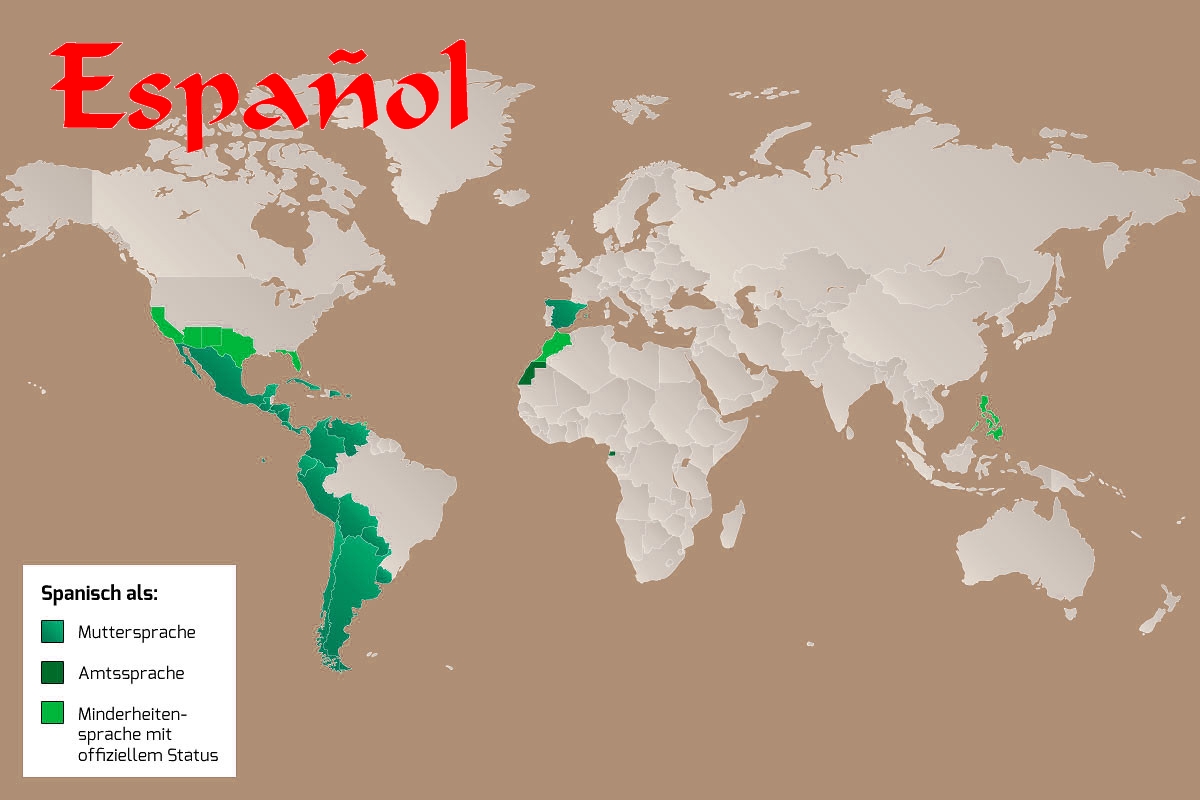
Die spanische oder auch kastilische Sprache (Spanisch; Eigenbezeichnung: español [espaˈɲol] bzw. castellano [kasteˈʎano]) gehört zum romanischen Zweig der indogermanischen Sprachfamilie und bildet mit dem Aragonesischen, dem Asturleonesischen, dem Galicischen und dem Portugiesischen die engere Einheit des Iberoromanischen.[1] In einer weiter gefassten Sicht kann das Spanische auch noch zusammen mit dem Katalanischen, dem Französischen, dem Okzitanischen und weiteren kleineren romanischen Sprachen wie Norditalienisch in die Westromania eingeordnet werden.
Die Wissenschaft, die sich mit der spanischen Sprache[2] und spanischen Literatur beschäftigt, heißt Hispanistik. Der spanische Sprachraum wird als Hispanophonie bezeichnet. Spanisch ist wegen des historischen Kolonialismus die häufigste Muttersprache auf dem amerikanischen Doppelkontinent und gilt z. B. durch die Funktion als Amtssprache zahlreicher internationaler Organisationen als Weltsprache (in Spanien selbst ist Spanisch jedoch nicht die einzige Sprache, siehe Sprachen in Spanien). Mit der Pflege der spanischen Sprache weltweit ist das Instituto Cervantes betraut.
Geschrieben wird Spanisch mit lateinischen Buchstaben. Im modernen Spanisch werden zusätzlich der Akut-Akzent für Vokale sowie die beiden Zeichen ñ und ü verwendet. In älteren Wörterbüchern finden sich auch das ch und ll noch als eigenständige Buchstaben.
西班牙语(西班牙语:Español),也称卡斯蒂利亚语(Castellano),指的是一种起源于西班牙卡斯蒂利亚地方的语言,为罗曼语族的分支,除了发源地的西班牙以外,其母语人士主要集中在拉丁美洲国家。
西班牙语的使用人口众多,全球共有近五亿人使用。按照第一语言使用者数量排名,为全世界第二位,仅次于汉语。加上第二语言人口,总使用人数排名则为世界第二,仅次于汉语。西班牙语是除英语、法语和阿拉伯语之外最多国家的官方语言,同时为联合国官方语言之一[2]。全世界有超过五亿九千五百万人的母语或第二语言是西班牙语,另外有二千四百万的学生将西班牙语当作外语学习[3][4]。



 Energy resource
Energy resource

 Energy resource
Energy resource
 ***Winter heating equipment and simple methods
***Winter heating equipment and simple methods

 Energy resource
Energy resource
 ***Summer cooling equipment and simple methods
***Summer cooling equipment and simple methods

 Geography
Geography

 Geography
Geography
 *World overview
*World overview


 IT-Times
IT-Times
 Economy and trade
Economy and trade
 Religion
Religion
 Financial
Financial
 Law
Law